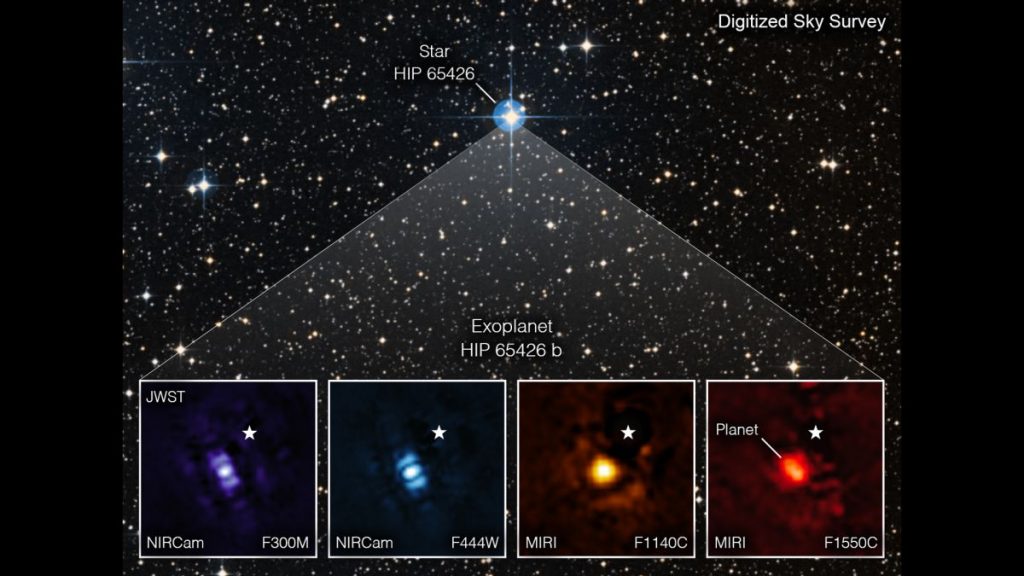
James Webb Space Telescope snags its 1st direct photo of an alien world (Image Credit: Space.com)
The James Webb Space Telescope took its first direct image of a planet orbiting a distant star, proving its potential to revolutionize exoplanet research.
The absolute majority of exoplanets have only been observed through temporary dips in brightness of the stars they orbit; only about two dozen have been imaged directly. But that might soon change. Less than two months after it started its science operations, the James Webb Space Telescope has delivered its first direct photo of a planet beyond our solar system.
The planet, a gas giant orbiting the star called HIP 65426 some 385 light-years from Earth, appears in the image as a tiny splotch close to the glowing star. Webb photographed the exoplanet using its Near-Infrared Camera (NIRCam) and the Mid-Infrared Instrument (MIRI), each of which focuses on a different flavor of infrared light.
Related: Iconic James Webb Space Telescope images turned into music
“This is a transformative moment, not only for Webb but also for astronomy generally,” Sasha Hinkley, an astronomer at the University of Exeter in the U.K. who led these observations, said in a statement (opens in new tab).
Scientists had discovered the planet in 2017 with the Very Large Telescope in Chile; Webb isn’t tailored to discovering new exoplanets and will instead excel at teaching scientists about worlds other observatories identified.
Exoplanets are extremely difficult to observe directly because they are so much fainter than the stars they orbit. This one, HIP 65426 b, could only be spotted thanks to a combination of factors. First, it’s extremely far away from its parent star, 100 times the distance from the sun to Earth (for comparison, Pluto orbits only 40 sun-Earth distances from the sun). Second, HIP 65426 b is also extremely massive — 12 times the size of Jupiter, the solar system’s largest planet.
Still, HIP 65426 b is about 10,000 times fainter than its host star in the near-infrared, and a few thousand times fainter in the mid-infrared part of the spectrum. Because of its sensitivity, however, Webb was capable of separating the two objects.
“Obtaining this image felt like digging for space treasure,” Aarynn Carter, an astronomer at the University of California, Santa Cruz, who led the analysis of the images, said in the statement. “At first all I could see was light from the star, but with careful image processing I was able to remove that light and uncover the planet.”
Both NIRCam and MIRI are equipped with devices called coronographs, which block the light of the central star.
“It was really impressive how well the Webb coronagraphs worked to suppress the light of the host star,” Hinkley said.
Observing the star through four different filters, the scientists eventually managed to obtain images that reveal the planet as a small blob of light. The blob’s shape varies in each image, a by-product of the telescope’s optics, the scientist said in the statement.
HIP 65426 b is a very young planet, only 15 to 20 million years old (compared to Earth’s 4.5 billion years); due to its gaseous nature it most certainly doesn’t host life. There are still many interesting questions astronomers might want to answer about this world and the many other planets that Webb will photograph in the future, including details of their chemical composition and age.
Follow Tereza Pultarova on Twitter @TerezaPultarova. Follow us on Twitter @Spacedotcom and on Facebook.





